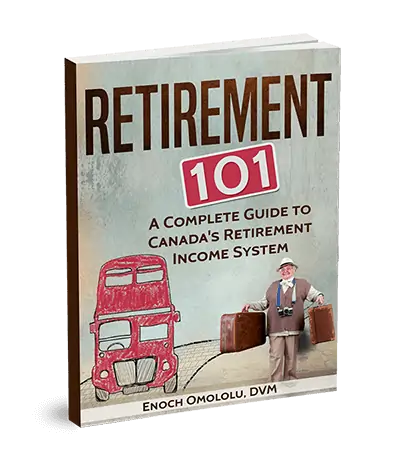Key Takeaways
- You should have at least 1x your income at age 30 and increase this to twice your income by the time you turn 35.
- At age 40, your retirement savings should be 3x your paycheque, increasing to 4x your income by 45.
- At age 50, you should have saved 6x your annual income, increasing to 7x your income by age 55.
- When you turn 60 and before retirement, your savings are expected to be 8x your income.
How much money do you need to save in your 20s, 30s, 40s, or 50s if you want to retire comfortably?
While a ‘magic’ number for each stage of your life is great for assessing your preparation, predicting your retirement income using a rule of thumb is not as straightforward as you’d like.
Several factors can impact how much you need to retire, a few of which include your:
- Housing situation: will you carry a mortgage or have paid off your home?
- Lifestyle: if you plan to travel the world in retirement and take expensive vacations, you will need to save more.
- Retirement Age: are you retiring at 55 or 65 years? Early retirement means more money is needed.
- Government Pensions: how much and how many government benefits will you qualify for? After deducting the OAS and CPP, your income shortfall will come from your retirement savings or workplace pension.
- Health Status: if you have significant health challenges, you may have to spend more money than previously planned.
What these factors tell us is that you should build some flexibility into your retirement plan. And you should have a plan.
A poll conducted by RBC in 2018 showed that while Canadians had a retirement savings number in mind, 48% did not have a financial plan to reach their goal.
How much retirement savings should you have based on your age? Read on to learn more.
Retirement Savings by Age
The time to start saving for retirement was yesterday. The earlier you start, the better because compound interest works on your behalf and grows your retirement pot.
You can use an age-based rule of thumb or income multiple to gauge how well you are doing. A popular formula that’s been suggested by Fidelity works as follows:
| Age | Retirement Savings |
| 30 years | 1 × income |
| 35 years | 2 × income |
| 40 years | 3 × income |
| 45 years | 4 × income |
| 50 years | 6 × income |
| 55 years | 7 × income |
| 60 years | 8 × income |
| 67 years | 10 × income |
To attain these numbers, experts advise that you should be investing at least 10% of your paycheque. This is the classical “pay yourself first” principle.
At least 10% of your income should be invested in the financial markets.
If you plan to have a ‘fat’ retirement, consider increasing your savings rate to the 15% to 20% range or even higher.
Average Savings by Age in Canada
Now that we know what is expected to meet your retirement savings goals based on your age, let us look at the average retirement savings for Canadians.
Statistics Canada tracks assets and debts held by economic families and individuals. Looking at the most recent numbers from 2019, we get a picture of the average savings for various age groups.
Average Savings by Age for Economic Families
To quote Statistics Canada, economic families refers to “a group of two or more persons who live in the same dwelling and are related to each other by blood, marriage, common-law union, adoption or a foster relationship.”
So, the data provided shows the average for Canadian households and may include spouses or common-law partners, their children, and relatives.
| Age Group | Retirement/Pension Savings | Other Financial Assets | Total Average Savings |
| Under 35 | $90,500 | $42,900 | $133,400 |
| 35 to 44 years old | $220,500 | $51,600 | $272,100 |
| 45 to 54 years old | $437,400 | $127,000 | $564,400 |
| 55 to 64 years old | $645,500 | $163,600 | $809,100 |
| 65+ | $514,800 | $224,400 | $739,200 |
Retirement/pension savings are an aggregate of private retirement plans, i.e. Registered Retirement Savings Plans (RRSPs), Registered Retirement Income Funds (RRIFs), Locked-in Retirement Accounts (LIRAs), Deferred Profit Sharing Plans (DPSPs), annuities, etc. and workplace pensions.
Other financial assets include Tax-Free Savings Accounts (TFSAs), bank deposits, non-registered investment accounts, and other non-pension financial assets.
While the average retirement savings look high, I should note that this is the “average” and the “median” amounts (which better reflect reality for most people) are significantly lower.
Average Savings by Age for Individuals
For individuals not in an economic family, the average savings by age are:
| Age Group | Retirement/Pension Savings | Other Financial Assets | Total Average Savings |
| Under 35 | $40,100 | $18,800 | $58,900 |
| 35 to 44 years old | $89,700 | $36,200 | $125,900 |
| 45 to 54 years old | $290,900 | $59,600 | $350,500 |
| 55 to 64 years old | $377,300 | $69,200 | $446,500 |
| 65+ | $272,100 | $112,000 | $384,100 |
As expected, the average savings are lower for individuals compared to households.
As you plan for retirement using the Fidelity formula above, you can follow these strategies to ensure your retirement planning is on track at different stages of your life.
Retirement Savings in Your 20s
Fresh out of college or other post-secondary education, you are probably starting out with an entry-level job in your 20s.
If you are aiming for a traditional retirement age of 65, your investment timeframe could be up to 40 years or more at this point, which is great.
Start saving if you can. However, if you are carrying high-interest debt (e.g. credit cards or personal loans), my advice is to pay that off first.
Thereafter, focus on building an emergency fund that’s equivalent to 3-6 months of your expenses. Use a high-interest savings account to hold your emergency funds so you can easily access them if needed.
If your employer offers a retirement or pension plan and offers to match your contributions, take them up on the offer.
Personally, I saw my 20s as an opportunity to get an education, develop marketable skills, and invest in myself. It was a time for taking risky bets that would eventually make it possible for me to earn a decent income later on.
If you end up with limited savings in your 20s, don’t fret. There’s still time to catch up.
Retirement Savings in Your 30s
Based on Fidelity’s rule of thumb, you should have at least your annual salary saved by age 30 and two times by age 35.
The reality is that your 30s will probably be one of the most challenging times in your life to save for retirement.
You may be thinking about buying a home, getting married, paying off debt, having children, and more. While you are busy catching up with life, beginning to invest for retirement is crucial at this stage.
The retirement clock is ticking, and you cannot afford to squander the time you still have on your side. Max out employer pension plans and pay attention to TFSA and RRSP contributions.
If you don’t have funds to contribute to both registered accounts, there may be merit in choosing one over the other.
Accelerate debt repayment and find ways to increase your income.
This is also a good time to get life insurance (when you are still very healthy) and create a Will if you have dependents.
Retirement Savings in Your 40s
At age 40, you should have saved three times your annual salary, increasing to 4× your income just about the time you hit that age that defines mid-life or “midlife crisis.”
Not to scare you, but if you are not yet saving at this point, you will need to double up. Investment timeframe is no longer your friend.
Continue to invest. Ensure you are not paying too much in investment fees. If you have a self-managed portfolio, ensure it is rebalanced at least 1-2 times yearly.
A robo-advisor like Wealthsimple can save you the hassle of rebalancing, offering free financial advice at a low cost.
You can compare robo-advisors in Canada.
Keep tabs on your emergency fund for unexpected expenses. It should hold 3-6 months’ worth of expenses and will need revisiting as your circumstances change.
Your 40s is a good time to increase your savings rate. Consider putting aside salary increases, bonuses, etc.
Retirement Savings in Your 50s
If you are a “Financial Independence Retire Early” (FIRE) adherent, your 50s could be when you retire (if you haven’t done so already).
For the average Canadian or American, a good gauge for assessing your retirement readiness is to have saved seven times your annual income by age 55.
If you haven’t been investing or you have a huge shortfall, there’s still hope; however, you will also need to start adjusting your expectations. For example, you could work a little longer and delay retirement by a few years to increase income saved.
Canadians can begin collecting CPP at age 65; however, for each year you delay it, your benefits increase by 8.4% per year until age 70.
If you decide to take CPP early at age 60, your benefits are reduced by 7.2% per year until you turn 65 (standard retirement age).
At age 50 and above, you should be more careful with the investment risk you are taking.
For example, if your portfolio was weighed 80% stocks and 20% bonds, you may want to lower the risk level a bit by increasing the bond component and decreasing stocks, e.g. 60% stocks : 40% bonds.
A more conservative portfolio may also be appropriate, depending on your circumstances. This is because your investment timeframe is shorter, and you have less time to wait for the markets to bounce back if there is a prolonged downturn.
Some other ways to boost your retirement savings include:
- Saving salary raises.
- Lowering your investment fees. A robo-advisor can help, and you may also benefit from working with a fee-only financial planner.
- Maximize contributions to your tax-sheltered (RRSP) and tax-free accounts (TFSA).
- Automate your investing, e.g. set up pre-authorized contributions.
- Cut your living expenses.
- Increase your overall savings rate.
Retirement Savings in Your 60s
You are close to retirement. At age 60, plan to have 8 times your annual income, and at age 65, a 9-10 × multiple or more would be excellent.
At age 65, the Old Age Security pension starts. Combined with the CPP, these benefits may account for up to an average of $16,140.24 per year based on the current average numbers for 2022.
Your retirement savings fill the gaps in your retirement income needs since CPP and OAS alone won’t be enough.
You can learn about how these pension benefits work in this retirement guide.
Your investment portfolio continues to require attention. While it is advisable to lower your risk exposure in retirement, some level of risk is required if you want your returns to exceed the inflation rate.
Keep your cash holdings in a high interest bank account that pays a reasonable interest rate – TFSA Savings, RRSP Savings, or General Savings.
If you doubt your plan, consult a certified financial advisor or planner. For a retirement calculation that takes your CPP, RRSP, workplace pension, and more into consideration, click here.
How Long Will My Retirement Savings Last?
It depends on how much you saved, how much you spend each year, your investment returns, and more. One way to look at this is to use the 4% withdrawal rule.
What this rule of thumb infers is that if you withdraw 4% of your savings every year, you should have enough money to last you through retirement (or at least 30 years)
Some of the assumptions of this rule include:
- Your investment portfolio is invested in stocks (50% to 75%), and it generates a healthy return.
- You have some flexibility with income withdrawals. For example, in a bad financial year, you may lower your withdrawal amount by a few percentage points.
- You increase your annual withdrawal by the inflation rate to account for decreasing purchasing power.
Assuming you have a portfolio of $1 million. Using the 4% withdrawal rule, you will withdraw $40,000 in the first year of retirement and adjust to inflation in later years.
Downsides of the 4% Rule
It assumes you are partly invested in stocks. Depending on your risk tolerance and financial circumstances, a 50% or more asset allocation of stocks can be too risky.
If the financial markets suffer a prolonged decline during your early retirement years, your withdrawals could cut too deep into your principal, and it may recover.
This is also referred to as the sequence of returns risk, and it works both ways (positively or negatively).
Today’s low-interest-rate environment does not bode well for savers and makes a 4% withdrawal ambitious if you are invested in money market instruments.
Lastly, it does not incorporate taxation. For example, your $40,000 withdrawal is pre-tax.
Some financial experts now propose a 3% withdrawal rate as a more practical rule of thumb, as it does better under stress testing. On the other hand, these are those who believe you should be withdrawing more than 4%.
There are many paths to reaching financial freedom and your retirement goals. For alternative ideas, you can take a look at some of the retirement savings case studies published by My Own Advisor.
So, how long will your retirement savings last? The answer is that “it depends.”
Average Net Worth by Age in Canada
Wondering how your net worth stacks up compared to the average Canadian in your age group?
The average savings by age can be a bit deceiving, considering that your net worth is what’s left after deducting your liabilities from your assets.
Net worth = Assets – Liabilities
Assets, in this case, would include both financial and non-financial assets like real estate, vehicles, and business equity. A significant portion of Canadian’s net worth is tied to their home.
Debt includes mortgages, credit cards, lines of credit, student loans, auto loans, and more.
From the same Statistics Canada report, the average net worth for Canadians based on their ages and family set up are:
| Age | Average Net Worth (Households) | Average Net Worth (Individuals) |
| Under 35 | $336,100 | $79,100 |
| 35 to 44 years old | $589,300 | $212,500 |
| 45 to 54 years old | $1,123,200 | $451,700 |
| 55 to 64 years old | $1,401,900 | $544,800 |
| 65+ | $1,298,800 | $589,700 |







I really like this article because it prompts one to think about retirement savings and gives strategies to do so, i.e. saving salary raises. The idea that savings of “multiple times salary” should increase as one approaches retirement makes sense.
But the article leaves me with three major questions:
1) What qualifies as “savings” toward the figures of “6 x salary” or “8 x salary”, depending on age? How does “savings” differ from net worth? Does that include equity in my principal residence? Equity in an investment property which is rented? Does it include present value of a defined benefit pension plan? Or does it only include cash and equities?
2) What qualifies as “salary” for the purposes above? Only my full-time employer paid salary (which is enough to live on now)? Or other income that I show on my income tax return such as rental income and investment income?
3) How do these numbers change if I am in a defined benefit pension situation, where I and my employer together contribute a portion of my income to my retirement?
@Ian:
Excellent questions. Here’s how I see it:
1. You should view your retirement portfolio as “one” portfolio which would include your investments (e.g. stocks, bonds, and investment property), savings accounts, and workplace pensions (especially when it is a defined benefit pension plan). Technically, this would also include your personal residence, however, you should be adding this value with some caveats. You have to live somewhere, so depending on your options for shelter, how much is going to be accessible, in reality, from this portion of your net worth? I haven’t considered reverse mortgages, etc.
2. For most people, this would focus mainly on regular income (mostly salary). Again, this is not set in stone. If you earn the occasional income from other assets, it probably won’t matter. If you earn consistent rental income that is already factored into your standard of living, it should be reflected since the idea is you are looking to save enough money so your standard of living doesn’t change radically when you are retired (at the very least you don’t want to be less comfortable).
3. Back to my analogy of viewing your investment portfolio as one piece, your DB pension should determine how much more you need to be saving. For example, your RRSP contribution amount is going to be reduced based on your DB contribution (both you and employer), so automatically this reduces how much you are able to invest in your personal RRSP. This may also give you some flexibility to take on higher risks with your other investments as some would view a DB pension as being fairly safe/secure (or as a sort of fixed income/bond investment/GIC). It often also means you may not need to worry too much about depriving yourself today as there is some sort of guaranteed payout in the future. Of course, nothing is really guaranteed, but a DB pension offers a lot more cushion than the alternatives…
There are many sides to this than what I have provided. For instance, your magic number would also be influenced by how much you would be receiving in OAS/CPP i.e. whether or not you will be getting the maximums being paid at the time…
Hi Enoch,
Does salary equal gross salary or net salary? This makes a substantial difference in the calculations.
Enigma
@Enigma: For this article, I had gross income in mind. This is based on the assumption that you would still need to pay taxes on a significant portion of your income in retirement.
Good read.
Thank you for all your hard work creating fact based Canadian personal finance content. The information in your posts is top notch and I really appreciate you sharing your knowledge with fellow Canadians.
Thanks,
Barett MacLeod